
Many decorative plants come from Asia and can also find a place in the garden, on the balcony or in the apartment here. The article explains which Asian plants there are and which locations they are suitable for.
To the point
- Many plants that have been cultivated in this country and have been known for a long time come from Asia
- Depending on the country of origin, Asian plants are also hardy
- Asian vegetables can also be grown in the garden
- Many well-known spices in our kitchens come from Asia
- Suitable for urban style in the apartment
Table of contents
- Plants for the balcony and garden
- Plants for the apartment
- frequently asked Questions
Plants for the balcony and garden
If you want to bring the Asian flair into your garden or balcony, you have a large selection of Asian plants. Many of the perennials and shrubs are hardy and require little protection. The list presents plants that can mainly be cultivated outside.

bamboo (Bambusoideae)
If you want a natural privacy screen, this is it different types of bamboo well advised. The graceful stalks grow up to four meters high.

- both sunny and shady locations
- upright growth with large foliage
If you decide to use bamboo in your garden you must first Plant one Place a rhizome barrier in the soil. Otherwise, the plant spreads throughout the entire garden and possibly also to neighbors via the long underground root runners.
Funky (Hosta) variety “Whirlwind”
This variety of hosta is one Shade perennial which can grow up to 35 centimeters high. It produces pale purple flowers in summer.

- The 15 centimeter long leaves are striking
- are yellow-white and strongly twisted
Hostas do not tolerate a lot of sunlight. However, due to the thick leaves of the Whirlwind variety presented, it can also find a place in a partially shaded location.
Autumn anemone (Anemone hupehensis)
The autumn anemone produces its white, pink or purple flowers in late summer into autumn. The long, wiry stems, which are richly branched, continually produce new flowers.
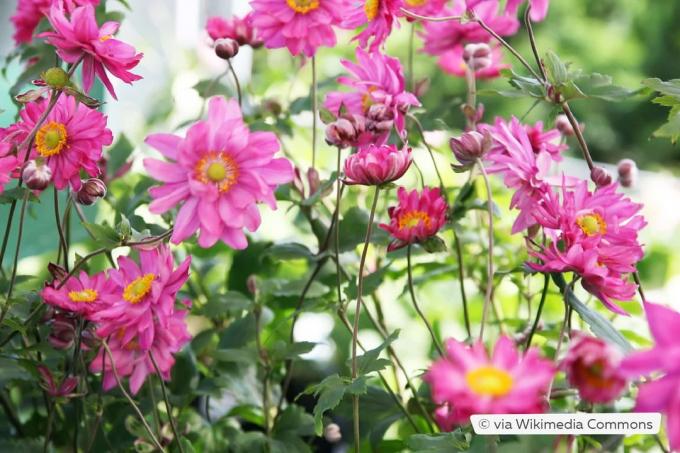
- Perennial between 90 and 130 centimeters high
- Partial shade and full sun are tolerated well
Perennial plants are usually perennial and hardy. If they are cut back in autumn and protected from frost with mulch, they will sprout again in spring.
Japanese lettuce (Farfugium japonicum)
The Japanese lettuce grows up to 30 centimeters high and only produces inconspicuous flowers. The perennial prefers locations in the shade.
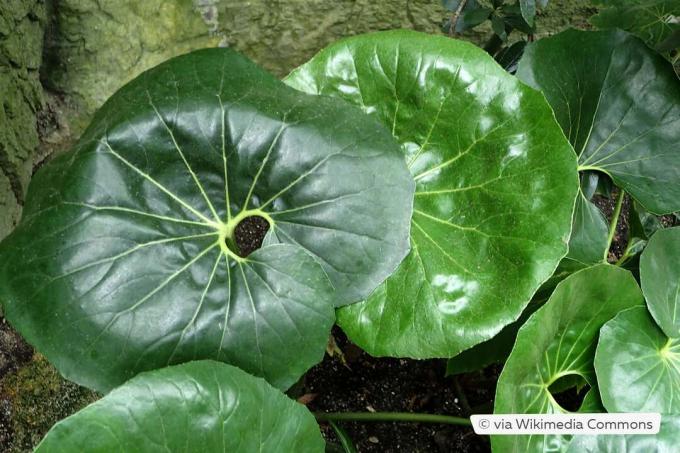
- excitingly marked leaves
- Hardy with little protection
Japanese swamp iris (Iris ensata)
A typical plant for the Japanese garden is the Japanese swamp iris, which grows to around 90 centimeters high and blooms in spring. Her name already shows that she needs a lot of water, especially during the flowering period.

- purple, large flowers
- sunny location in water with acidic soil
The Japanese swamp iris comes in different varieties that have different flower colors from white to purple, blue-violet to purple. The flowers also have various veins and markings.
Japan forest grass (Hakonechloa macra “Aureola”)
The Japanese forest grass, which grows up to 40 centimeters high, is very suitable for a shady location in the garden. The stalks do not grow vertically upwards but hang in an arch.

- especially good for one too Rock garden suitable
- nevertheless nutrient-rich and loose substrate
record sheet (Rodgersia podophylla)
The leaf is a white-flowering perennial. The plant grows to a height of between 80 and 130 centimeters and is originally native to Korea and Japan.
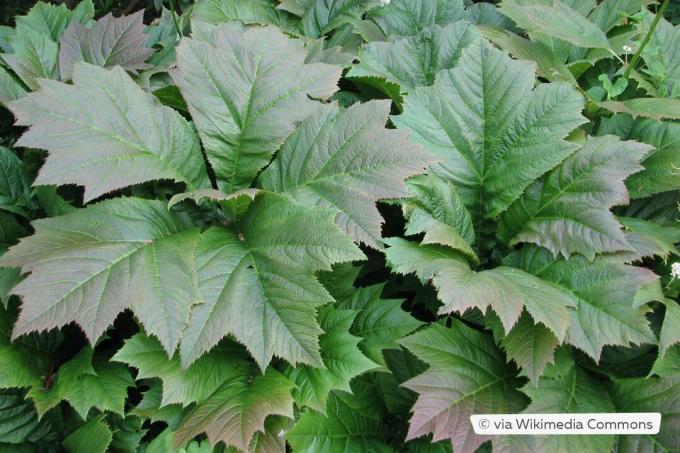
- In autumn the leaves turn wine-red
- Partially shaded location is recommended
Remember that Asian plants also need well-drained and often slightly moist soil to thrive.
Black snake beard (Ophiopogon planiscapus “Nigrescens”)
This Asian perennial has dark, almost black leaves and only grows to a height of around 20 centimeters. In a shady spot, for example under a tree, it can also grow as a dense carpet.
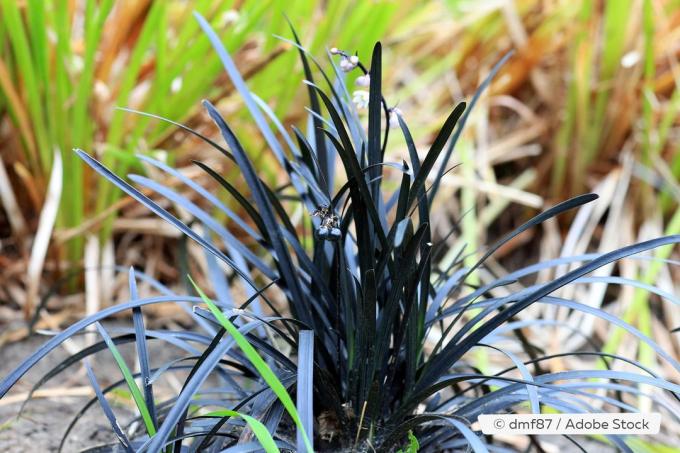
- nice contrast with the white-pink flowers in midsummer
- Lacquer-black berries form in autumn
Ornamental rhubarb (Rheum palmatum var. tanguticum)
In partial shade, the ornamental rhubarb grows up to two meters high and produces white-red flowers in early summer. This plant is one of the most impressive Asian perennials.

- requires a lot of nutrients
- young plants have mahogany-red leaves
Dwarf China Astilbe (Astilbe chinensis var. pumila)
The perennial, which grows up to 30 centimeters high, blooms from mid-summer to autumn. A sunny location is preferred.

- creeping plant which forms flat mats
- decorative foliage outside the flowering period
Plants for the apartment
The Asian plants for the home are those that want a lot of warmth even in winter. Nevertheless, most of the plants presented here can also be moved to the balcony or terrace in their pots on warm days in summer if they are protected from wind and rain. The plants from the list presented are particularly suitable for an urban Asian style in the room.
Breadfruit (Artocarpus altilis)
The breadfruit tree is only suitable for cultivation all year round in the apartment or a heated winter garden. However, the sprawling plant requires a lot of space.

- large leaves pierced with holes
- Most of the leaves are shed in winter
Elephant ear (Alocasia macrorrhiza)
The Elephant ear is also known in this country as alocasia, giant taro or arrow leaf. The plant is the perfect companion for urban style in an apartment because as a potted plant it does not grow higher than two meters.

- Leaves are spring green and fresh all year round
- Bright location in the apartment or outside in a sheltered place over the summer
Due to the large leaves, the elephant ear helps a lot to improve the air in the home. The plant is therefore particularly suitable for cultivation in a bedroom.
turmeric (Curcuma longa)
If you like cooking with Asian spices, you can also use the yellow spice turmeric in a pot Cultivate your own cuisine. The plant wants a constant temperature of 18° Celsius.

- The rhizomes are harvested for seasoning
- yellow inflorescences about 50 centimeters high
Turmeric is not only a tasty spice but also a very decorative exotic plant for the home.
Pandan palm (Pandanus amaryllifolius)
The pandan palm is also known as pandanus leaves or screw tree and can be grown on the balcony or terrace in summer. As the name suggests, the plant grows in a twisted manner and also forms many aerial roots.
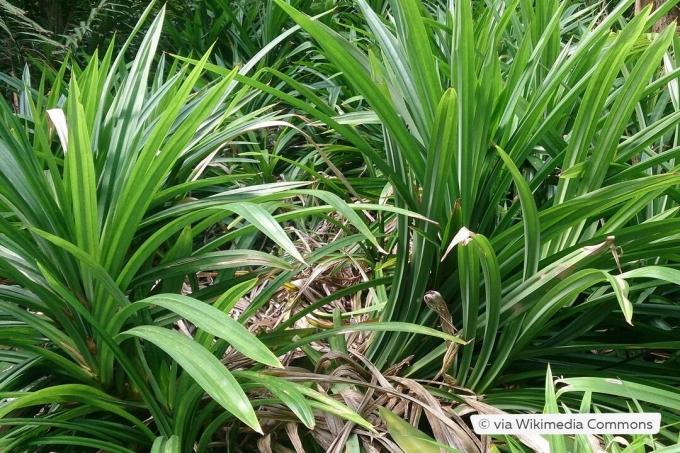
- Leaves have a nutty aroma
- Location in the winter garden or bright rooms
Patchouli (Pogostemon cablin)
The special feature of patchouli are the strongly scented leaves, which are also required to produce the scent of the same name. The scent is exuded with every light touch.
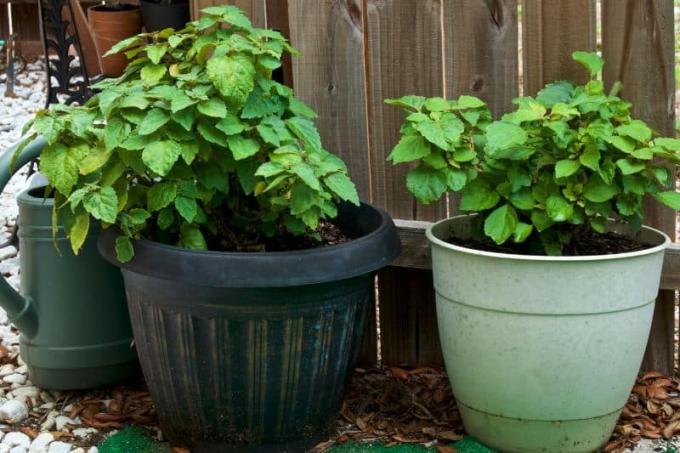
- evergreen shrub with dense growth
- A bright and warm location in the apartment is desirable
Patchouli can also be moved from May to October in a pot in a pot garden on the balcony or in a bright location in the garden.
Vetiveria (Vetiveria [Chrysopogon] zizanioides)
Potted plant for year-round cultivation in the home or over the summer on the terrace or in the garden. The essential oils of this plant were the basis for the perfume Chanel N° 5.
- graceful, upright growing grass
- can be cultivated together with lemongrass
pepper (Piper nigrum)
The pepper plant is the plant that produces the white, green and black pepper we know. However, the plant is also very decorative for planting in containers in the home.

- fir green, smooth, heart-shaped leaves
- grows slightly twining upright
Pepper plants are very suitable for a corner because they require little space. The location should always be warm, both in winter and summer.
Devil's tongue (Amorphophallus campanulatus)
The devil's tongue is a plant that requires constant warmth all year round and is therefore best kept in a heated winter garden. Here she can show off her decorative flowers.
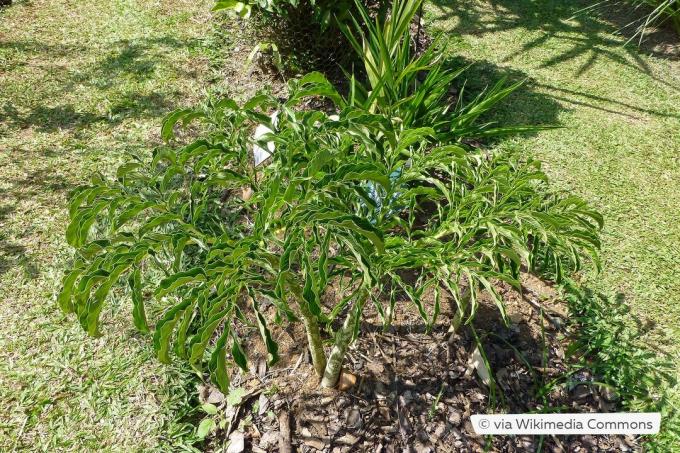
- large bract in ochre, brown and purple with a thick piston
- Leaves wilt in autumn and sprout again in spring
frequently asked Questions
If you not only cultivate Asian plants in your home but also a Japanese garden If you want to create style, then you must note that Asian gardens are determined by four elements become. This is a tree. Water, moss and stone as philosophical elements. In addition, in a Japanese garden the eye should always be directed to a very specific point.
There are many Asian plants that have been cultivated in home gardens and homes for many years, so you may no longer think about the fact that these are also plants that originate in Asia acts. These include camellia (Camellia japonica), magnolia (Magnolia), ornamental cherry (Prunus serrulata) and also popular in many front gardens rhododendron.
“Exotic” plants include all plants that are not native or native to our regions for a long time. These include, for example, the real one Ginger (Zingiber officinale) or the Che silkworm tree (Cudrania tricuspidata), which offers tasty fruits. Both plants are currently real insider tips for the garden or balcony.
You can also create a vegetable patch with Asian vegetables in your garden. The well-known ones are suitable for this Chinese cabbage (Brassica rapa subsp. pekinensis) as well as soybeans (Glycine max). Pak choi (Brassica rapa subsp. chinensis), okra (Abelmoschus esculentus) and, for seasoning, lemongrass (Cymbopogon citratus).



